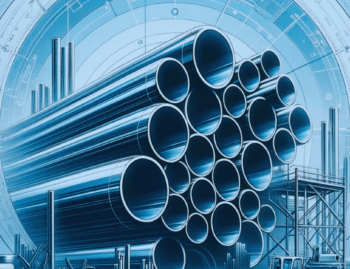Recently, a polar vortex and record-breaking lows have swept the Midwest and East Coast. In turn, it’s causing the construction industry to take a closer look at structural steel’s advantages.
Steel buildings are the best to construct in cold weather regions because they can easily withstand excessive rain and snowfall. Here are some of the main strengths that steel buildings exhibit in cold weather conditions.
Resistance Against Snow Load
As the winter season gradually progresses, the snowfall increases, creating structural issues in areas where it’s becoming excessive. As a result, heavy snow loads can cause roof leaks, water damage, and roof sagging. Snow load refers to the amount of accumulated snowfall that settles on top of a building.
The downside about using weaker materials, such as wood, is that they tend to collapse or break. This is especially so when the snow load becomes overwhelming. A roof’s ability to hold up maximum snow load without caving inwards is known as the snow load capacity.
You need to have a robust and durable roof strength to resist the snow load during the winter. This is where steel comes in.
The snow load on top of buildings tends to melt as soon as the weather temperature begins to rise. This can result in leaks and irreparable water damage. Steel is non-porous and can resist snow load and wetness.
The use of steel in new construction and roofing can keep buildings safe from weathering. It can also keep their occupants safe from discomfort.
Superior Insulation
Especially in regions that see below freezing temperatures, steel buildings can maximize indoor comfort. Steel offers natural insulation that is unmatched by wood. This can be achieved by using steel to divert the cold to various parts of a building.
This concept is possible through leaving a margin between the walls and roofs of the building and the items inside. That way, it leaves the cold trapped in-between the margin, and the rest of the surface area remains warm.
This makes steel an especially viable storage solutions. Self-storage centers, warehouses, and other similar businesses should use steel structures to protect items against the elements.
Heating
Back in the day, it was acceptable to use materials, such as plastic and wood, for main pillars and rafters. However, when tested against harsh weather conditions, they don’t stand a chance.
Since steel is an adequate conductor of heat, warmth is more efficiently distributed throughout steel buildings. The well-distributed heat will also cause the snowload on top of the building to melt quicker.
Wood has been a structural go-to for so long. As a result, we’re just barely realizing the many benefits steel structures have to offer. Particularly in commercial buildings, steel provides added comfort and convenience during harsh winters.
In areas like the Midwest and East Coast where severe weather conditions are common, steel buildings make a vast difference. This goes for manufacturers and individuals looking to renovate their homes, barns, etc.











